IN FINDING EEL-COLOR CERAMICS
Anyone who has ever been to Hoi An ancient town (old Quang Nam ) and once held in their hands the terracotta figurines with the original brick color, will surely be delighted by the rusticity. And now, if you like something fresh and a bit luxurious, you can go to Son Thuy pottery establishment located on the strip of land at the end of Thanh Ha village - where Mr. Nguyen Viet Lam (27 years old) has been diligently researching and reviving the glazed pottery line that has been lost for about 100 years.
Artisan Nguyen Viet Lam introduces the classic eel-skin glazed pottery of Thanh Ha ancient village. PHOTO: HOANG SON
"Like many others in this 500-year-old pottery village, I was born with a strong sense of touch. At the age of 7 or 8, I was able to mold simple objects. I clearly remember the scene where my great-grandmother occasionally brought out enameled vases, cups, bowls... to admire and then sat in contemplation for a long time. She said that ancient Thanh Ha pottery had 3 main lines: red pottery, earthenware and enameled pottery. Of which, enameled pottery was considered the most sophisticated but also the most difficult to make. Because of the complicated manufacturing techniques and high cost, few people dared to follow, and it gradually disappeared. My father regretted a legacy that once made the pottery village famous, so he quietly tried to restore it. When it was my turn to succeed, although I encountered many difficulties, I was never discouraged," Lam said.
After finishing 12th grade, Lam did not continue his studies but returned to his family's pottery kiln with the determination to find the glaze through the vague story of his great-grandmother. From the little information left in the minds of the elderly, Lam deduced: Clay in the Thu Bon River area would be suitable for porcelain glaze - "what is available around here". One day, Lam accidentally came across a document stating that Thanh Ha glazed pottery has many similarities with the crafting techniques of famous Japanese pottery lines such as Arita, Mino or Kiyomizu. From here, the path to finding ceramic glaze became brighter. Lam's father went to Japan to study ceramic glaze and he obtained valuable documents.
From ancient glaze, Nguyen Viet Lam has created and found many colors to cover the pottery along the Thu Bon River. PHOTO: HOANG SON
During the 6 years of his research journey, Lam and his father witnessed countless batches of glazed pottery that were left unfinished. The soil in Thanh Ha contains a lot of sand, making it difficult to glaze. The glaze is prone to flowing unevenly, pitting, opacity, or not turning out the desired color. One day, about 3 years ago, Lam shouted with joy when he saw one of the glazed pottery jars "awaken" to the eel-skin, shimmering yellow color that his great-grandmother had mentioned. "Every time I experimented, I took detailed notes and as I suspected, it was the local ingredients, including lime and ash…", Lam shared.
NOSTALGIC NOT FAKE
Struggling with the eel yellow color, since the moment he found the "formula" for glazing ceramics, he began his journey of "adventuring" with glaze on raw soil. Pointing at the figurines, vases, jars... with different glaze colors, Lam said he had found a "common denominator" for porcelain glaze and that changing the glazes with different colors also became easier. He began experimenting and soon succeeded in bringing brilliant colors to large vases. More uniquely, thanks to mastering the temperature, Lam produced many batches of pottery with special visual effects. For example, there are yellow vases but the glaze has cracked spots like flowers, there are vases that are also yellow but under the glaze are sparkling "pearl sand" grains.
The stages of pottery making are marked by craftsmanship. PHOTO: HOANG SON
However, it took him a long time to gain the trust of tourists in order for the market to accept the glazed ceramics as it is today. At first, when standing in front of the glazed ceramic jars, many people did not believe it because for a long time in Thanh Ha there was only raw ceramics. Some people even asked where Lam imported ceramics to sell. He quietly led visitors through the stages from kneading clay, shaping ceramics to glazing and firing. The visitors who participated in the experience the next day came to receive the products and were completely convinced by Lam's story of reviving glazed ceramics. Tourists were very excited that all the stages of making glazed ceramics at Lam's facility were done by hand. Every day, Lam's wife turned the wooden table to mold ceramics, Lam's younger brother, who had a "knack for hands", created models, drew and directly decorated the products... Lam's father watched the kiln and fired the ceramics.
Artisan Nguyen Viet Lam introduces the classic porcelain glaze he revived. PHOTO: HOANG SON
The process of making ceramic glaze is all done by hand and spontaneously. Currently, Lam has a team of 4 workers living in Thanh Ha village, so he can rest assured about the production process. "The products are mainly hand-painted ceramic vases in the old style. Nostalgic, not fake antique. Each product is a unique creation and has its own value," he said.
"So how can we distinguish Thanh Ha ceramics from other ceramics on the market?", I asked. Lam pointed to the ceramic vase that his younger brother had "described" as a coiled dragon on the edge of the mouth, then smiled: "Do you think that with such craftsmanship and old glaze, is it easy to identify?".
The glazed clay figurines have new colors. PHOTO: HOANG SON
Young artisan Nguyen Viet Lam has persistently found the formula for glazed ceramics and he said he will persistently introduce it through social networks, online sales... Right at the workshop, Lam continues his craft, organizing experiential workshops with unique forms of "fermentation". "I still tell the story of soil - glaze - fire on platforms so that customers can recognize and understand that: Thanh Ha ceramics now have glaze. Hoi An is not only famous for its red ceramics but also for its equally luxurious glazed ceramics", Lam confided.
Source: https://thanhnien.vn/chuyen-nghe-nhan-gen-z-hoi-sinh-men-gom-tru-danh-185251016224846928.htm


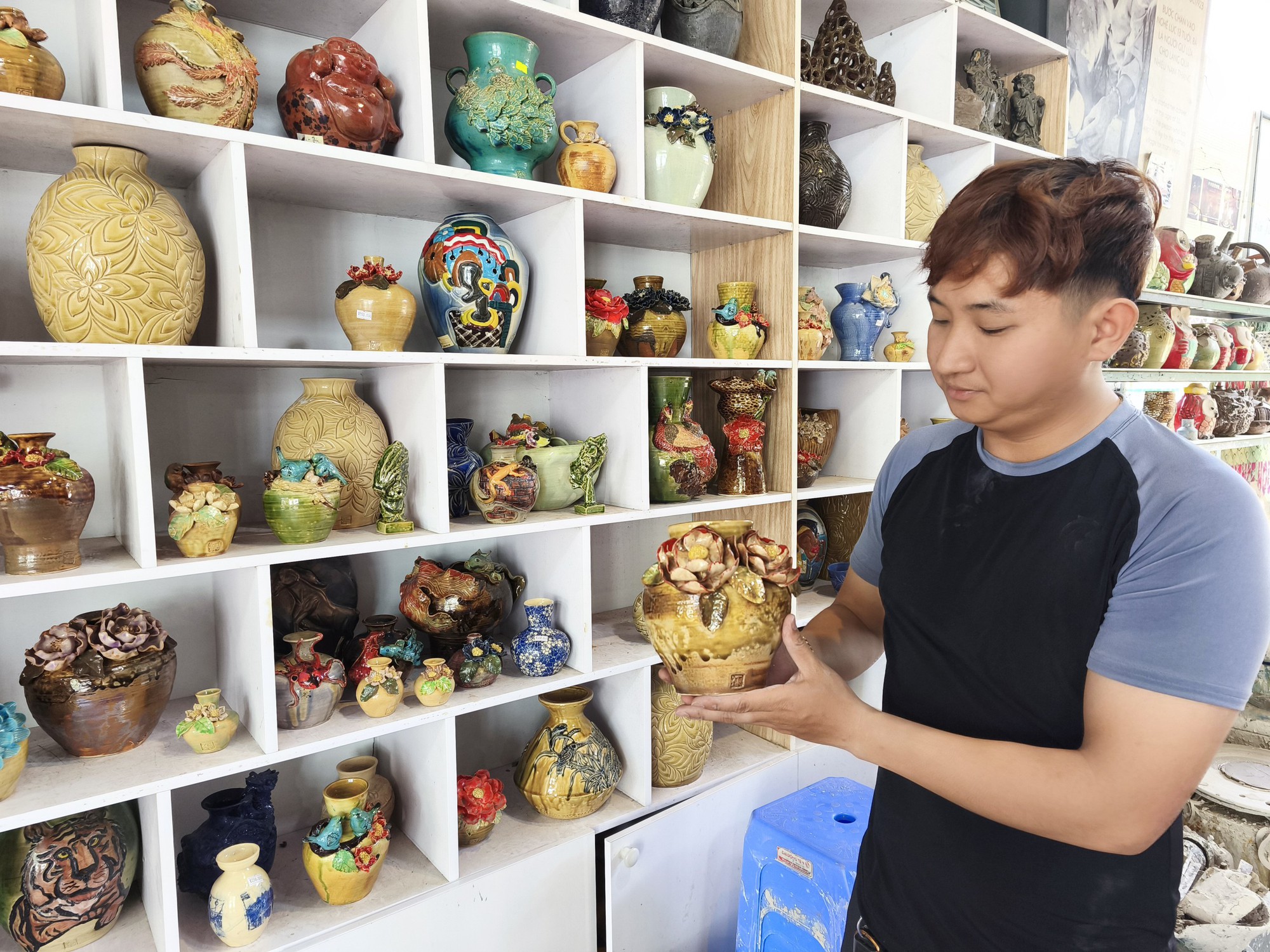

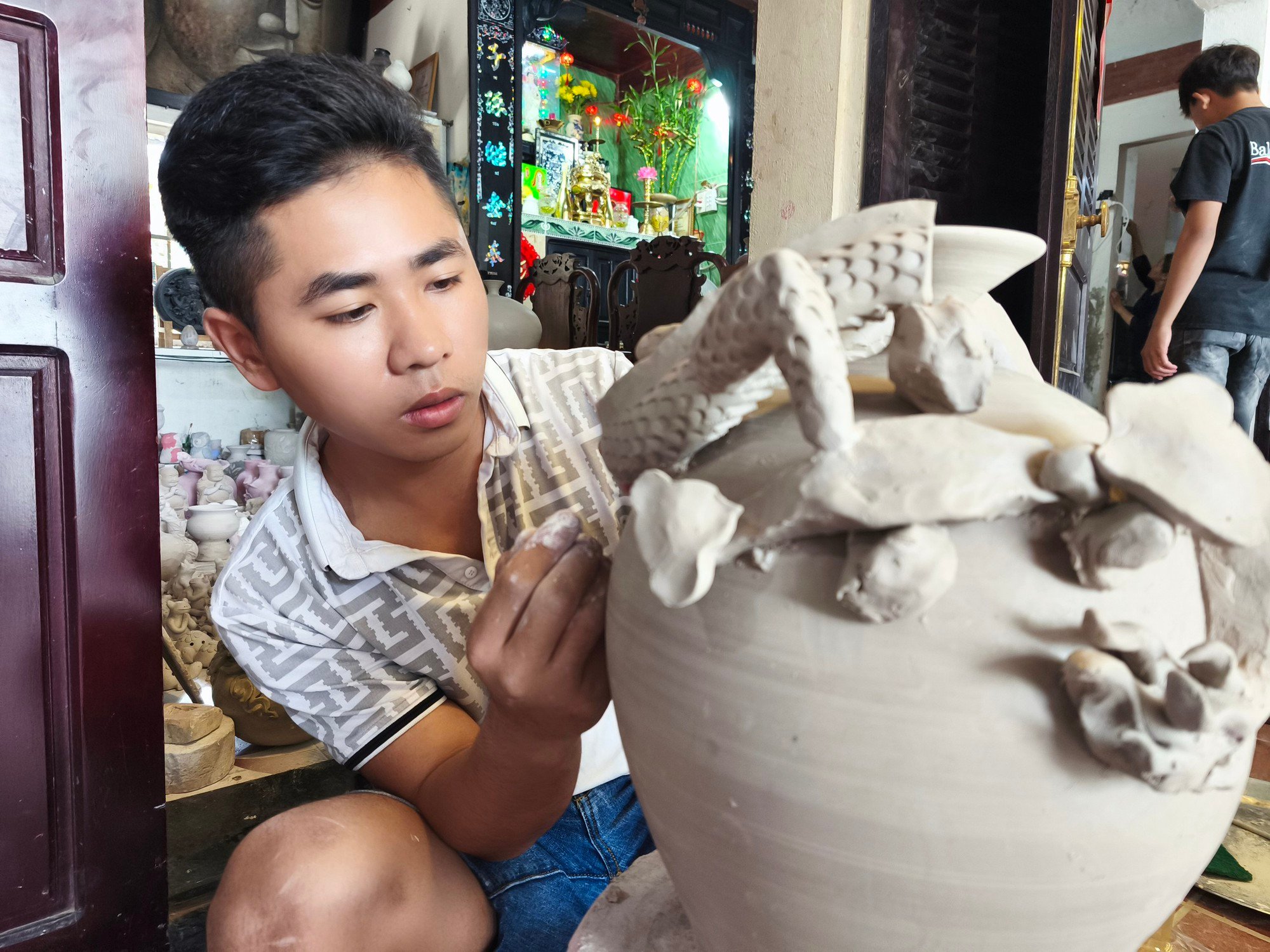


![[Photo] Nhan Dan Newspaper launches “Fatherland in the Heart: The Concert Film”](https://vphoto.vietnam.vn/thumb/1200x675/vietnam/resource/IMAGE/2025/10/16/1760622132545_thiet-ke-chua-co-ten-36-png.webp)







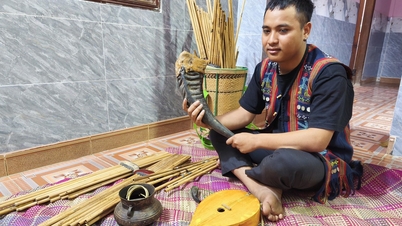





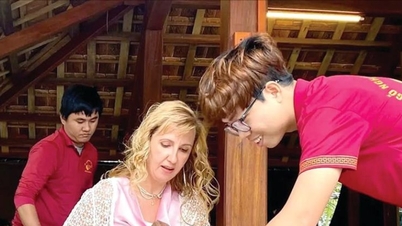























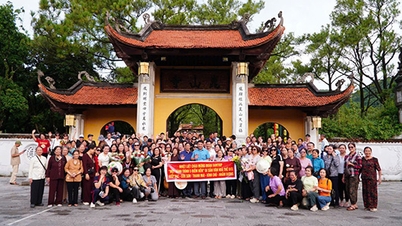

































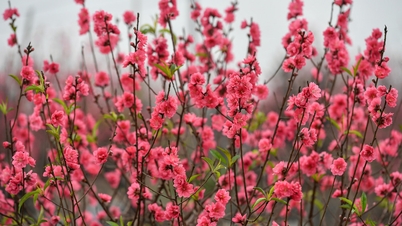




































Comment (0)